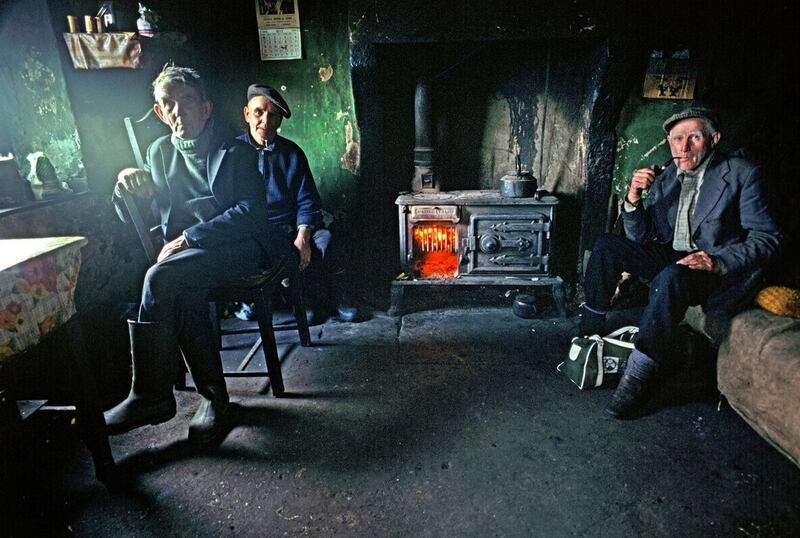
"I was afraid when we went to live in Mín na Giúise that I would roll off it. The house is perched on the side of a continuous slope. The farm is nine miles by road from Donegal Town. I would say it is almost as far into the hills as you can go and still come to a farmhouse. Oddly enough, if you walk the nine miles or even the last four or five, the landscape is so conducive to thought that it seems like a very short distance. You are continually fascinated by the country that you are walking through. But if you get a lift and go by car, you get an eerie feeling that you are going very, very far away from human habitations. I always noticed that in the first few years we were there-walking it, it seemed short, but when somebody gave me a lift I immediately sensed his feeling of being taken out into some desolate, lonely place." – Bob Bernen in RTÉ Radio's Documentary on One: Bob Bernen from the Blue Stacks, by Proinsias Ó Conluain (1978)
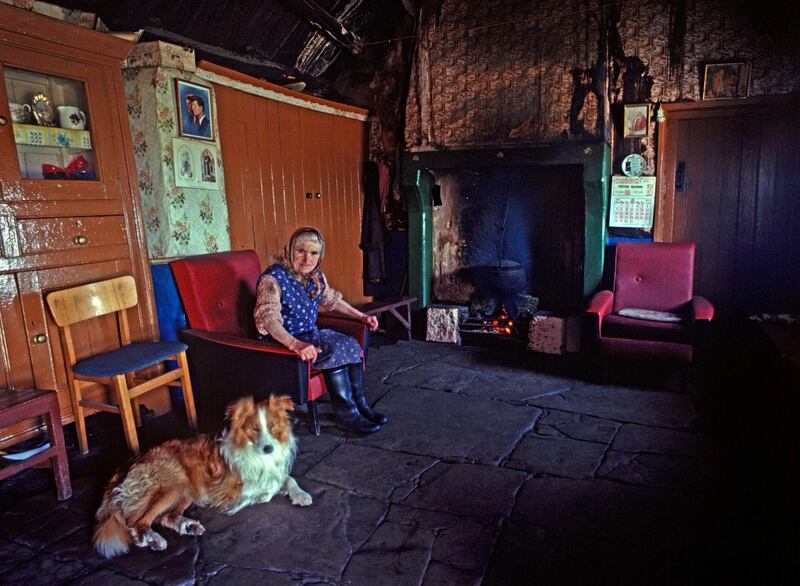
“We have had two weeks of fine weather,” the solicitor remarked to Bob Bernen as he gave him the keys to the near-derelict house. “I think you’ll find it drier up there than it was the last time you were here”. It was June 22nd, 1970. That day it started to rain, and, as Bernen remembered years later, “it rained almost without let up until the following February.”
Born in Brooklyn, New York, in 1928, Bernen was the son of a Russian immigrant who had gone into the garment industry and made money. In 1950 the immigrant’s son took a bachelor’s degree in Latin and Greek at Cornell and then in 1953 a master’s at Harvard, where he briefly taught Classics; he worked for a year at Washington University in St Louis, but then left to study painting in Vienna. In Europe, he met Satia Jenkins of Philadelphia, a graduate of Smith College, a prestigious liberal arts institution for women, who had continued her education at the American School of Classical Studies in Athens. In 1961, they married in Venice, with their wedding making the social columns of the New York Times. Basing themselves in Vienna, the couple spent the rest of the decade researching a book on art.
And then, in summer 1970, looking for peace and quiet, they said, the Bernens bought Petey Boyle’s farm in Mín na Giúise, on the southern slopes of the Croaghs, Na Cruacha Gorma, the Blue Stacks, in south Donegal.
Over the next few months, they restored the four-roomed, flag-floored, two-storey house stopping short of getting running water and electricity. They had no phone and no television, only a radio on which, at night, Satia listened to the BBC.
The neighbours – the nearest were a mile away – warmed to “the Yanks”. Jimmy Burke of Cró an Chaorthainn, then in his early sixties, gave Bob “the whole training of a dog in a nutshell” and showed him how to look after the sheep that came with the farm, and he thatched his byre and schooled him in the use of a scythe. Bob and Satia also bought a cow and calf. Shortly afterwards, working in a field, Bob looked up and saw a woman coming purposefully over a hill. It was Hannah Burke, a younger sister of Jimmy. Asked where she was going, she replied, “I am coming to you, Bob. I know you bought a cow and you don’t know how to milk. I am coming to show you how to milk the cow.”

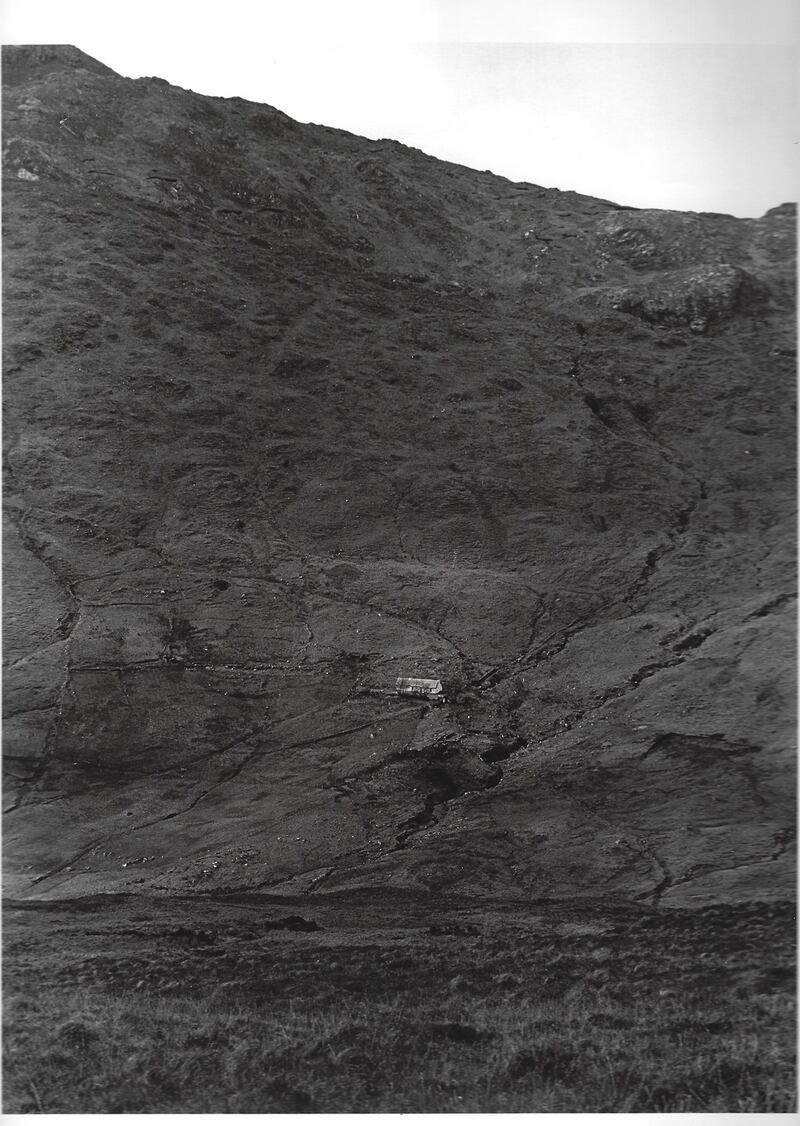
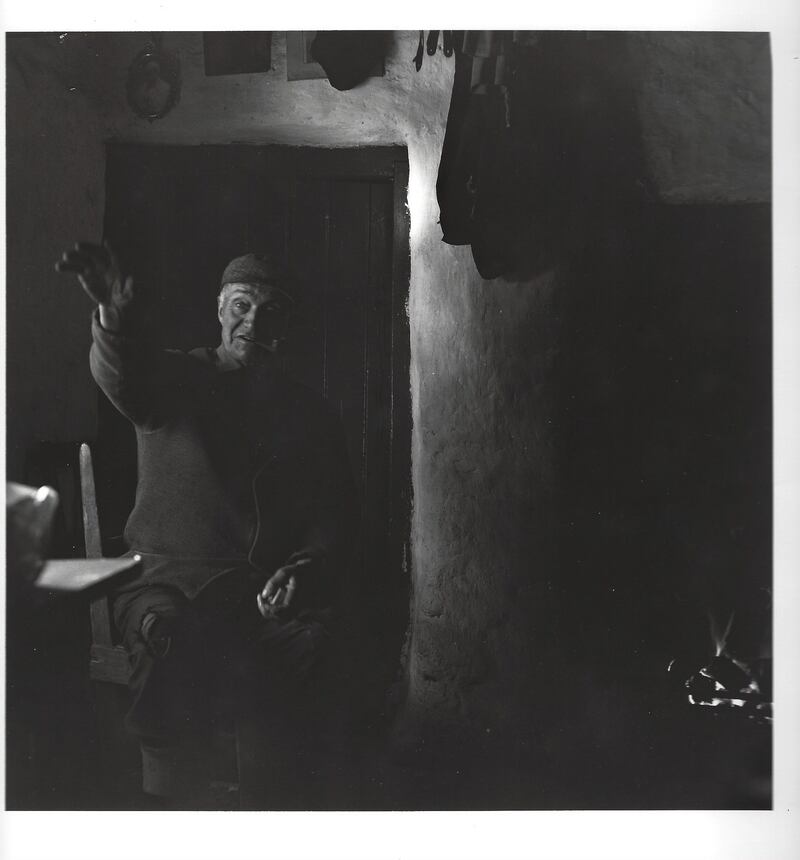
In their first years in Mín na Giúise, the Bernens did not have a car, either walking the nine miles to Donegal Town or taking a lift with Amby (Ambrose) Meehan of Letterbarrow who ferried people into town in his car or his mini-bus. But over time, they fell into step, “gradually accommodating”, as Bob put it, to the neighbours’ ways and abandoning their own, as less appropriate to the lives they were leading. In 1975, Brigid and Joe McDermott convinced them that they should get the gravel road tarred-the Bernens had previously opposed the suggestion-and together they formed the high-sounding Meenaguse Road Users Association, with Joe as president and Bob as secretary. After some ritual lobbying, the Council repaired and tarred the Mín na Giúise-Seascann an tSamhaigh road. And that same year, the Bernens acquired a car.
Sheep-farming in the Croaghs was and is not easy. The grey crow and the fox are omnipresent threats and every now and again a sheep will get stuck on a grassy ledge on the side of a spinc or cliff; there is a risk too of dogs worrying or killing sheep. For a sheep-farmer, as Bob Bernen explained to broadcaster Proinsias Ó Conluain, “Every year is a small miracle”.
Still, the Bernens were never just sheep-farmers. They were writers, clacking away at a typewriter first by candles and latterly by Tilley lamps. In 1973, a London publisher released their Myth and Religion in European Painting, 1270-1700: The Stories as the Artists Knew Them. Also, they were not without resources-in Dublin, Bob was a member of the swanky Kildare Street and University Club on St Stephen’s Green; and they had connections-in Donegal, they were on artist Derek Hill’s guest list for dinner at Gartan Glebe.
But sheep-farmers the Bernens became and, by all accounts, they were good sheep-farmers and, tending their flock alongside their neighbours, they developed a keen appreciation of the upland community that had adopted them. In the Croaghs, Bob wrote, people had “a vertical orientation, a way of seeing the world that, narrow as it was, could be at once both profound and elevated”, and he and Satia found that way of seeing preferable to that in the cities: “a horizontal one, oriented in all directions, endlessly broad, thinly shallow”.
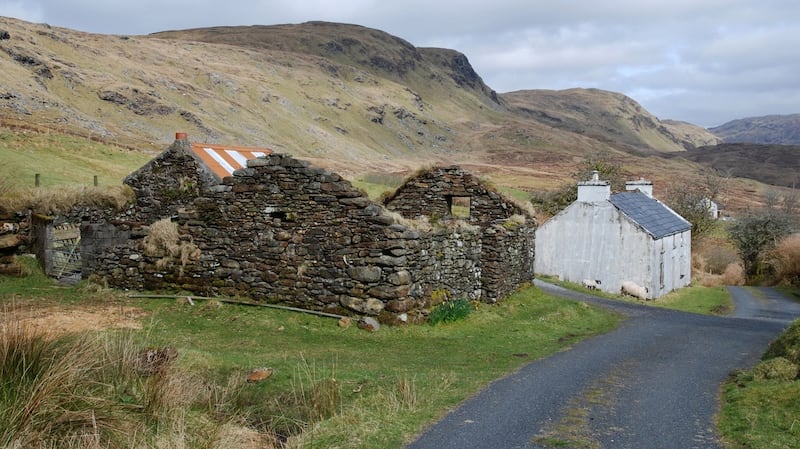
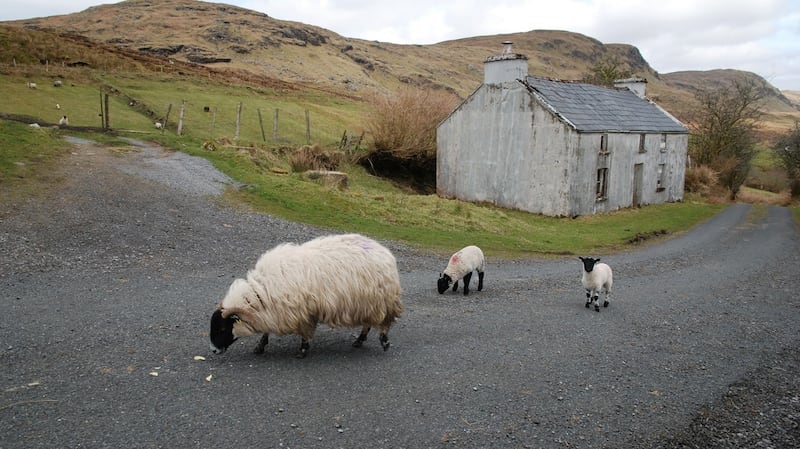
In 1978 Bob published a collection of stories about life in the Croaghs, Tales from the Blue Stacks. In a foreword, he explains that his tales concerned some of what he and Satia “heard, saw, or themselves experienced” and that “unlike fiction, which falsifies in order to achieve a greater effect”, they are a “true picture”.
That is problematic. Certainly, the names of actual people and places are used: to name only two people, Jimmy Burke features in a tale about the thatching of a byre and another about the training of a dog, in which Amby Meehan, the popular Letterbarrow hackney-man, also appears. But the line between fact and fiction blurs, with some tales elaborating the supposed innermost thoughts and feelings of characters who are, it seems, based on actual people. Critic Rosita Sweetman was having none of it, asking “How can he know what a certain farmer thought on a certain day twenty years ago when he walked over the ‘rough heathery hill’?” She had a point.
Still, people familiar with the Croaghs and similar places were impressed with Bernen’s depiction of hill-farming people. Peadar O’Donnell was an admirer – “a gem of a book” – and so too was Con Houlihan. Internationally, in an increasingly frenetic world darkened by the prospect of nuclear war, Bernen’s assertion of the value of an older, simpler way of life struck a chord. Tales from the Blue Stacks sold well in Britain and America and, in 1983, Bernen followed it up with a second book on the same community, The Hills.
Not a one
It was a cold dry night and enough moonlight filtered through the cloud cover for us to see our way without any light. For a long while we plodded along without talking, listening to the sound of our own steps in the noiseless night. As we reached the sudden steep uphill bend in the road that marked the beginning of the rise to Croagh Gorm, the Blue Stack. I felt the onset of the breeze that always blow in the treeless hills, and which divides them from the richer valley land below. Jimmy paused and looked around at the last few houses on the lower ground.
“Not a light,” he said. “Not a light.”
I was puzzled by the remark and didn’t answer. We walked on.
”They’re all asleep,” he went on. “Not a man up. And you see the way we haven’t met a one on the road? Not a one.”
I wondered who Jimmy expected to meet on the road at 3 a.m., but I grunted a soft assent. We walked on along the ascending road, once more in silence.
“Not a one,” Jimmy repeated after a while. And then, as though he sensed my perplexity, he added, “I remember the time there be ones up and down this road all night, until dawn, until morning they be comin’ and goin’. Comin’ and goin’, you see, ramblin’, to the cards and music and dancin’ and all. Piles of them. Always.”
“All night?”
"All night. Piles of them."
– From The Thatched Byre, in Tales from the Blue Stacks (1978)

In Bob and Satia Bernen’s first decade in the Croaghs, death and emigration winnowed the population around Mín na Giúise – for present purposes, the electoral division of Binbane – from 282 persons in 1971 to 229 in 1979, a decline of 18.8 per cent, almost a fifth. And by the mid-1980s when the Bernens returned to America it had fallen below 200, down almost a third on what it had been when they arrived.
Jimmy Burke, the man who gave Bernen “the whole training of a dog” and much else besides, died at home in Cró an Chaorthainn in 1993, aged 84. He and people like him who lived out their lives in the place-the elderly of the 1970s and 1980s – had seen it fall to ruin: there had been 1,039 persons in Binbane in 1901, in 204 houses, and, again, in the mid-1980s the population was below 200, with the hills now pockmarked with closed and crumbling houses and rushes and whins reclaiming hard-won fields. At the last census, in 2016, the population stood at 165 in 71 permanent households.
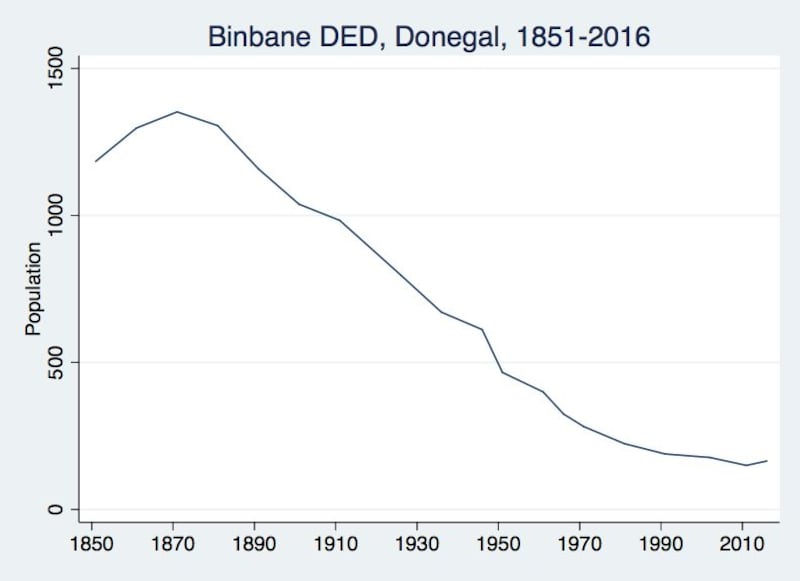
Demographic decline had not begun, as happened elsewhere, with the Famine, but rather in the wake of the American civil war, when there was an outflow to the industrializing States – the population which had risen to 1,352 in 1871 stumbled to 1,305 in 1881, with the rate of decline increasing in succeeding decades. By 1926, when Jimmy Burke who remembered “piles” of people in the hills turned eighteen, the population, at 797, was already less than 60 per cent of what it had been at peak – and in his time, he would see it reduced to less than a quarter of what it had been in the 1920s.
Burke was one of a family of 18. Some of his siblings emigrated. Others married and moved closer to Donegal Town and the villages of Glenties, Inver and Mountcharles. And others still, like Jimmy himself, never married and never left.
But predominantly, the 20th century had been a time of leave-takings, people departing for New York and Philadelphia, Glasgow and Coventry, a century of loss – the burial of the last of the name, the closing of houses, townlands falling silent.
Nobody left. Not a one.
Not a word
Things I do that Peadar Nohar More has never done: wake up to an alarm clock; draw water from a tap; brush my teeth; write a letter; wear a tie; talk over the phone; fill out a questionnaire; pay taxes; pack my bags; catch a bus, train, plane; drive a car; drink coffee; catch the flu; sign my name.
Things Peadar Nohar More and I have both done: walk; talk; smoke; drink tea; go rambling; sow cabbage, onions, carrots; set spuds; dig them; dip sheep, dose and shear them; mow hay, oats, rushes; milk the cow; dung the byre; train dogs; go to the hill; put up sheep-wire; cut drains; cut and win turf; thatch; make bread; do our own laundry.
Things Peadar Nohar More does that I have never done: talk Irish; kill foxes with a stick, badgers, mink; save old sheep-dip against maggots; predict the weather by watching animals; never feel the cold; castrate lambs; bless himself after a meal; know old cures (curing a cow of a founder with bruised potatoes in a sack; curing her of the moozles by feeding her the soup of a fat hen; curing himself of a bad back with a weed poultice; curing an injured ankle with a prayer); know old legends; know the special powers of priests; live in a house five hundred yards from the road; deduce prehistory; retell the Bible in another version (the wren and the robin go out from the Ark; midges stop the building of the tower of Babel; the Fire precedes the Flood); see waterhorses, neels, dorhos; plait Brigid crosses; bring in Brigid; ponder the mysteries.
Two Lives, from The Hills: More Tales from the Blue Stacks (1983)
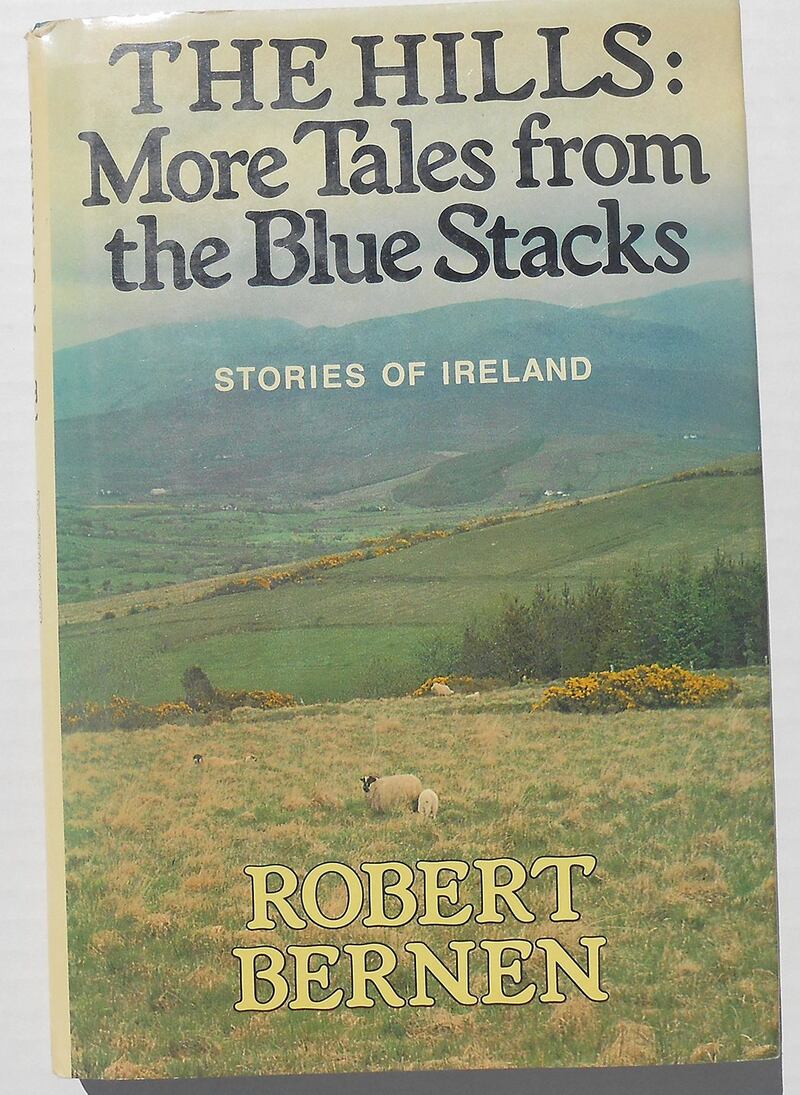
Bob Bernen compiled those lists on his first trip home to the United States in 11 years, sometime, it seems, in the late seventies or early eighties. The night before he left for New York, Peadar Nohar More had called to see him. Initially, Bob had thought it a regular visit, but as Peadar sat, filling pipe after pipe, he realized that the old man was going through “the traditional send-off for emigrants, sitting up with them the entire night before their departure and smoking and drinking and talking – and no doubt at other times singing and dancing-in a final long evening together before a leave-taking that might mean twenty years of absence, or longer, even a lifetime.”
Back in New York, the “size and brilliance” of the city dazzled Bernen for three days and nights, but on the fourth night, in the New England countryside, he could not sleep, and he lay awake until dawn thinking of Peadar, the things they had shared and never would share.
Now, near half a century since the listing of things shared and never to be shared, few if any men in south Donegal have done all those things that Peadar Nohar More did. And I would venture that today most people between Frosses and Donegal Town have more in common with Bob than Peadar.
For sure, few “talk Irish” in a place where 75.9 per cent of Binbane’s 983 people did in 1911, and where as late as 1926, when only 50.8 per cent of the district’s 797 inhabitants spoke Irish, there were two people – a man and a woman – returned in the census as having no English at all. And doubtless a good many elderly people who were returned as having English in the first half of the 20th century had only the most rudimentary grasp of it and seldom spoke anything but Irish.
Still, Irish faded away in the second half of the century. Strikingly, when some of the Bernens’ old friends died in the 1980s and 1990s, including some of the Burkes who had moved to the lowlands, obituaries noticed their attachment to Irish, their joy in speaking it, and represented their deaths as a break with “the past”: Irish, it was being intimated, belonged to the past.
In the Bernens’ time in the hills, in the part of Binbane classified as Gaeltacht there were 17 inhabitants in 1971, 12 of whom spoke Irish. There were 14 people there in 1986, when five spoke Irish, and nine people in 1991, when only two spoke Irish.
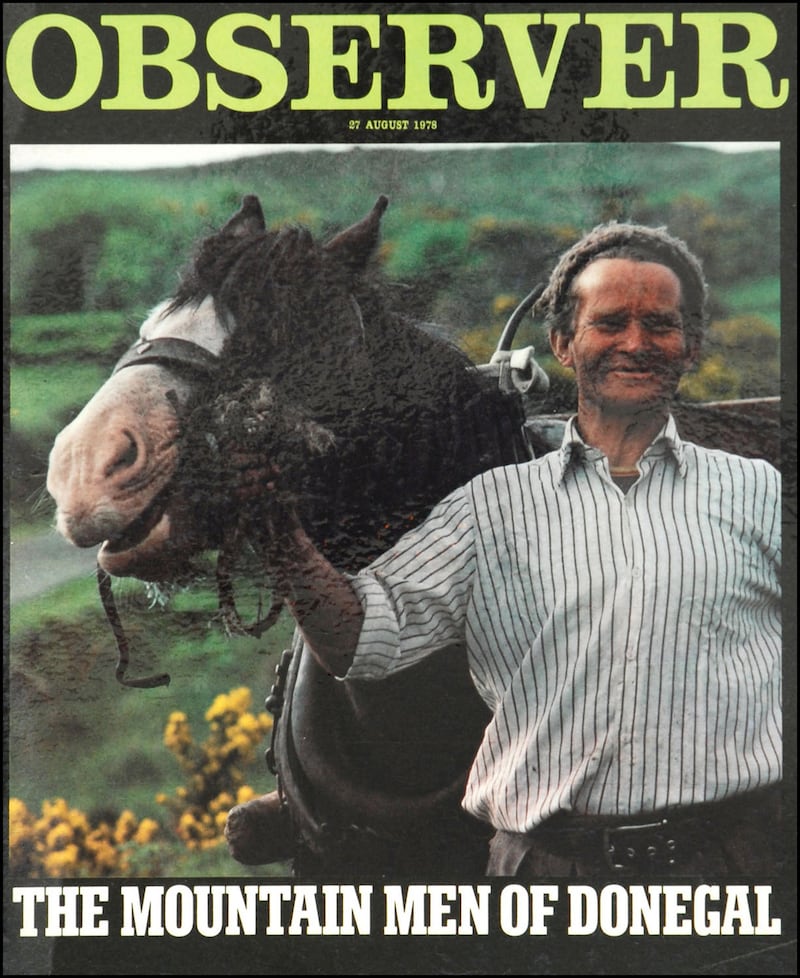
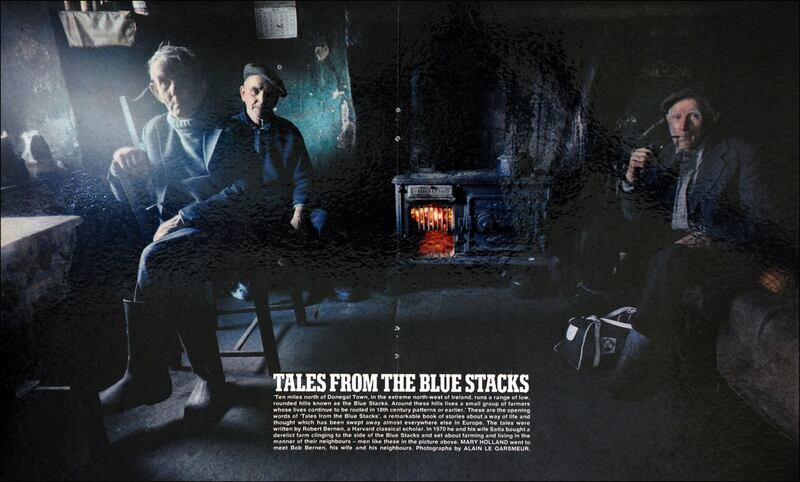
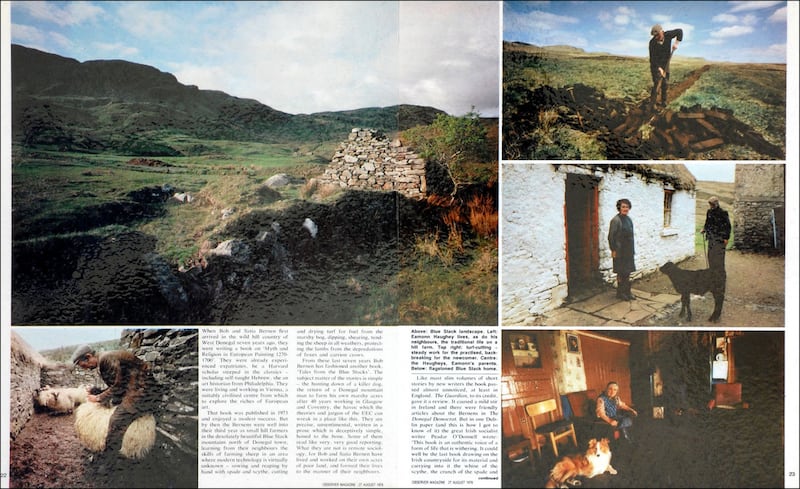
Figures for Irish-speaking for the wider electoral division, including the part not classified as Gaeltacht, were higher, but much reduced from the early 20th century: in 2002, Binbane had a population of 177; 74 persons over three years (there were only five children under three) professed to have Irish: 14 of the 74 said they spoke it daily, nine weekly, 31 less often and 20 never. At the last census, 46 of the 161 persons aged over three in Binbane (total population 165) professed to be able to speak Irish, but only one female did so daily outside the education system and 10 never spoke it.
Bernen himself tried to learn Irish, keeping notebooks and making recordings, but surprisingly, for he was adept at languages, proficiency eluded him. And his own repeated depiction of the Irish spoken around Binbane as “spill over” from a more populous Irish-speaking district to the north, from which his area was “cut off” by a mountain, is misleading. Language does not “spill over” mountains. Rather, Irish had remained, like snow, on the hills after it melted from the southern lowlands.
As for the other things that Peadar Nohar More did that Bob Bernen never did – the stories he told, his cures and divinations, his conviction that he had seen an each-uisce (water horse) in a mountain lake – they belong to modes of living and thinking that passed away not only in Ireland but across western Europe in the last few centuries, petering out since the last world war.
And we should not lament their passing. The critic John Berger, an urbanite who, like the Bernens, settled in a remote mountain community – in his case, in the French Alps in the early 1960s – resisted any idealisation of “peasant life”, for it involved burdens of physical work that were “often devastating and always oppressive”. But he was nonetheless appalled at the notion that cultures which had endured for millennia should be simply consigned to the past, that they had no longer any value.
In Pig Earth, published a year after Bernen’s Tales from the Blue Stacks, he argued that “to dismiss peasant experience as belonging only to the past, as having no relevance to modern life, to imagine that thousands of years of peasant culture leave no heritage for the future-simply because it was seldom embodied in lasting objects-to continue to maintain, as has been maintained for centuries, that peasant experience is marginal to civilization, is to deny the value of too much history, and too many lives. No line of exclusion can be drawn across history in that manner, as if it were a line across a closed account.”|
Seamus Heaney had the same take on Irish: “Not to learn Irish is to miss the opportunity of understanding what life in this country has meant and could mean in a better future. It is to cut oneself off from ways of being at home. If we regard self-understanding, mutual understanding, imaginative enhancement, cultural diversity and a tolerant political atmosphere as desirable attainments, we should remember that a knowledge of the Irish language is essential in their realization.”
It is about what is to come no less than what has been and gone.
Speak Out
In 1984, the year after The Hills appeared, the Bernens returned to the States, so that Bob could receive treatment for Parkinson's Disease. There, they made a home for themselves in Rumford, Rhode Island and from 1987 to 1993, Bob edited a newsletter, Parkinsonian Speak Out, that promoted participation in speech therapy to people afflicted with that cruel disease. He rekindled too his interest in painting. In 2000, Brown University's Sarah Doyle Gallery staged an exhibition of his work. Included in it were some paintings executed in Donegal. And poignantly too later self-portraits by his Parkinson's ravaged hand.
Bob Bernen died in 2002, survived by Satia and his daughter, Rebecca, from a relationship at graduate school. Satia Bernen died in 2006.

“Tho’ much is taken much abides” is inscribed on Bob Bernen’s gravestone. That oft-quoted line from Tennyson’s Ulysses might have been uttered of the southern slopes of the Croaghs when he and Satia came to know those hills in the early seventies, their communities then a century in decline, lingering, holding on, but the end clear.
More has since been taken and little now abides. And so it is that Bob Bernen’s tales provide glimpses of ways of life and forms of thought in the Croaghs, almost at the moment, as he phrased it, of their final disappearance, their fading into modernity – or, more precisely, their fading into a particular modernity, characterised by deepening inequality, environmental degradation and cultural erasure, to which, globally, too many for too long have been indifferent.
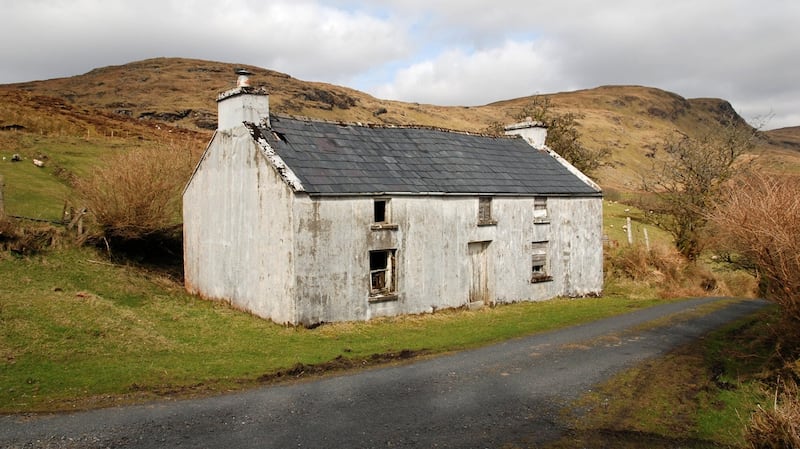
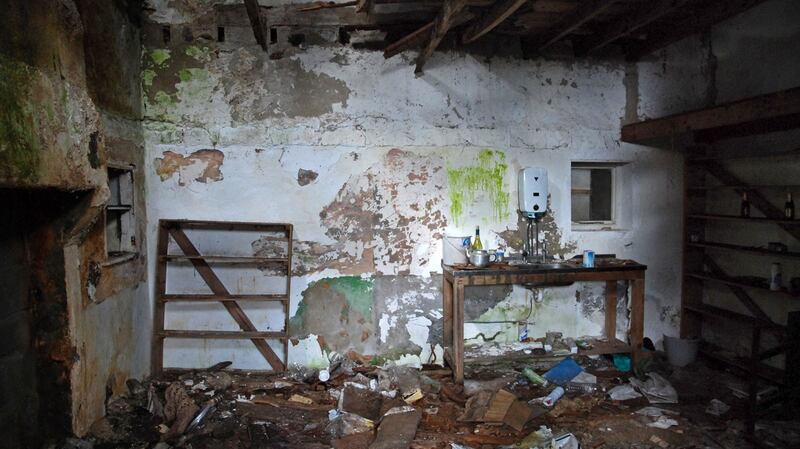
What next?
Irish died as a communal language on the southern slopes of the Croaghs in the last century. Today, there are "strong" Irish-speaking communities where the number of school-goers has halved in the last two decades, and where the education system is the primary context in which the majority of the young speak Irish. The challenge, then, is not to sustain Irish-speaking communities, but to rejuvenate them.
In 1970, when the Bernens landed in Mín na Giúise, the young leaving Gaeltacht communities were generally seeking employment, often the same type of “start” as those who went before them over the previous century – manual labour and domestic service. Now, over half a century later, many leave, in the first instance, for third-level education.
Enabling Irish-speaking graduates to live and work in the Gaeltacht is central to its future. Good work has been done. Údarás na Gaeltachta has attracted high-tech businesses and it has fostered cultural tourism initiatives, all of which employ graduates. It has also developed impressive gTeic facilities – well-equipped work spaces, available at a reasonable rent – across its area of operation. NUI Galway has two university centres in Connemara and one in Gaoth Dobhair. University College Cork has a facility in Corca Duibhne. Ringfencing a small percentage of the Higher Education Authority’s research funding for projects, in disparate disciplines, to be located in those Údarás and university facilities could make some contribution to positive change – and cost nothing.
Others will have better ideas. But time passes. And the southern slopes of the Croaghs have seen how quickly communities can shed a language.
Breandán Mac Suibhne is a historian at NUI Galway where he directs Acadamh na hOllscolaíochta Gaeilge; he is the author of The End of Outrage (2017).

















